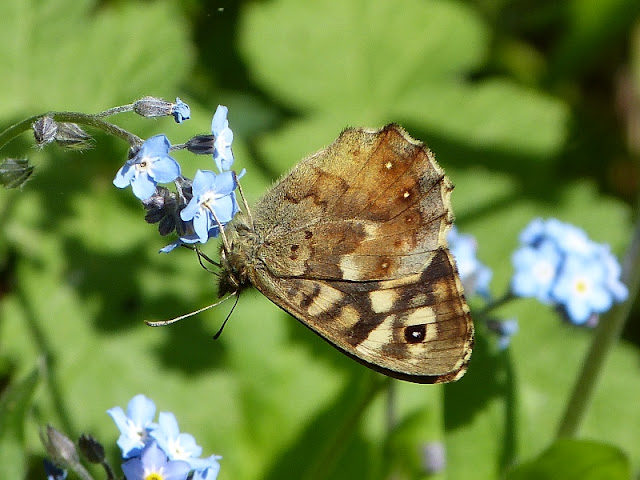While I was
delighted to see the arrival of the Wall Brown, Lasiommata megera, in 2010 and its subsequent spread across East
Lothian I note that it has declined severely in Southern England. Strangely, it
is hanging on around the coast of England, but since the mid-1980s, what was
once a very common butterfly has become a rare sight in an area centred around
Buckinghamshire and Oxfordshire.
The Wall
Brown normally produces two generations of butterflies a year. The first
generation emerges in May and June and a second generation occurs in August and
September. This species over-winters as a caterpillar.
A study,
published in December 2014, The lost
generation hypothesis: could climate change drive ectotherms into a developmental
trap? By Hans Van Dyck, Dries Bonte, Rik Puls, Karl Gotthard and Dirk Maes
looked at the declining number of Wall Browns in Belgium.
Their theory
is that due to climate change the season for this butterfly is extending. If
the first generation is emerging earlier and the subsequent generation is
therefore appearing earlier then there is a potential for a third generation to
emerge late in the season. However, there is not enough time for this third
generation to breed, or for their eggs to hatch in time to make it through the
winter. Presumably, eggs and chrysalises can’t survive frosts. It would be
interesting to know if all instars of the caterpillar can survive cold weather.
This theory
sounds very plausible to me and it could also help to explain why the Wall
Brown is now spreading north into East Lothian. We have certainly been
experiencing less severe winter weather here over the last 20 years. Possibly
before that our season wasn’t long enough for two complete generations to
survive and go on to produce caterpillars before the winter set in. In effect
we are now experiencing the sort of weather that was once more common in the
Home Counties.
Number
of Wall Brown records received over the last five years
|
||||
2013
|
2014
|
2015
|
2016
|
2017
|
54
|
78
|
70
|
129
|
273
|
2017 was the
best year we have had for Wall Browns. The number of records I have received
has increased each year since they were first recorded in East Lothian in 2010.
Last year we recorded more than twice as many Wall Browns
as we had in 2016. They have now made their way right around the coast and to
various inland sites.









